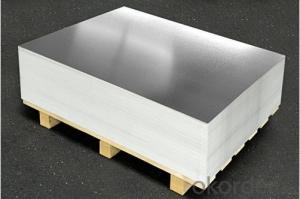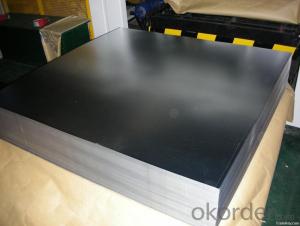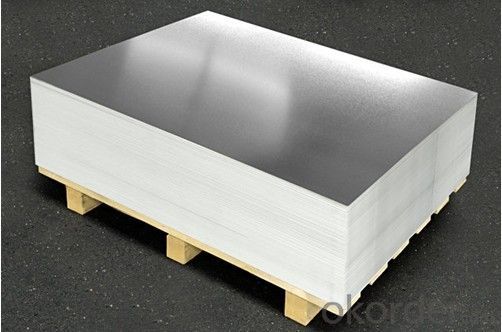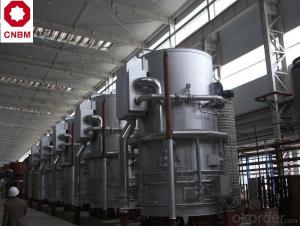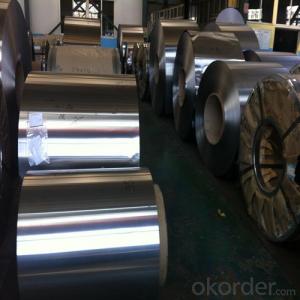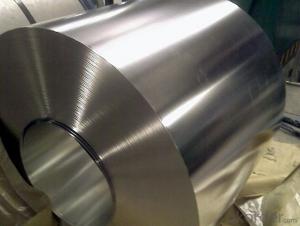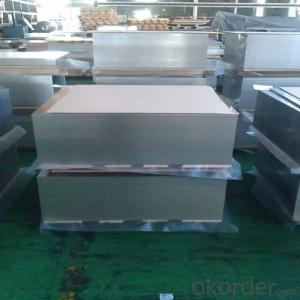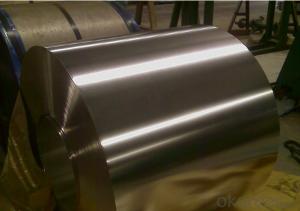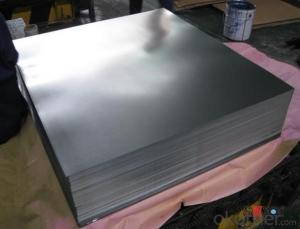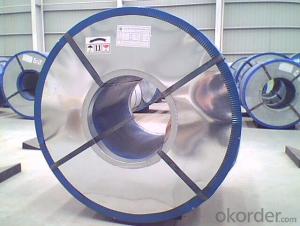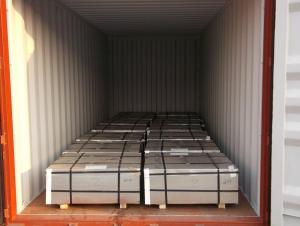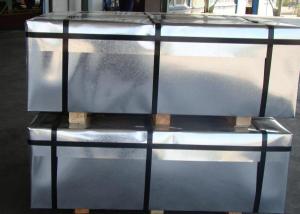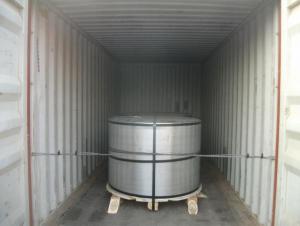Electrolytic tinplate (ETP) coils and sheets for Metal Packaging
- Loading Port:
- Tianjin
- Payment Terms:
- TT OR LC
- Min Order Qty:
- 25 m.t.
- Supply Capability:
- 20000 m.t./month
OKorder Service Pledge
OKorder Financial Service
You Might Also Like
1.Electrolytic tinplate (ETP) coils and sheets for Metal Packaging Description
Electrolytic Tin Plate Coils and Sheets for Foods Metal Packaging, is one thin steel sheet with a coating of tin applied by electrolytic deposition. Tinplate made by this process is essentially a sandwich in which the central core is strip steel. This core is cleaned in a pickling solution and then fed through tanks containing electrolyte, where tin is deposited on both sides. As the strip passes between high-frequency electric induction coils, it is heated so that the tin coating melts and flows to form a lustrous coat.
2.Main Features of the Electrolytic tinplate (ETP) coils and sheets for Metal Packaging
Appearance – Electrolytic Tin Plate is characterized by its beautiful metallic luster. Products with various kinds of surface roughness are produced by selecting the surface finish of the substrate steel sheet.
Paintability and printability – Electrolytic Tin Plates have excellent paintability and printability. Printing is beautifully finished using various lacquers and inks.
Formability and strength – Electrolytic Tin Plates have got very good formability and strength. By selecting a proper temper grade, appropriate formability is obtained for different applications as well as the required strength after forming.
Corrosion resistance – Tinplate has got good corrosion resistance. By selecting a proper coating weight, appropriate corrosion resistance is obtained against container contents. Coated items should meet 24 hour 5 % salt spray requirement.
Solderability and weldability – Electrolytic Tin Plates can be joined both by soldering or welding. These properties of tinplate are used for making various types of cans.
Hygienic – Tin coating provides good and non toxic barrier properties to protect food products from impurities, bacteria, moisture, light and odours.
Safe – Tinplate being low weight and high strength makes food cans easy to ship and transport.
Eco friendly – Tinplate offers 100 % recyclability.
Tin is not good for low temperature applications since it changes structure and loses adhesion when exposed to temperatures below – 40 deg C.
3.Electrolytic tinplate (ETP) coils and sheets for Metal Packaging Images

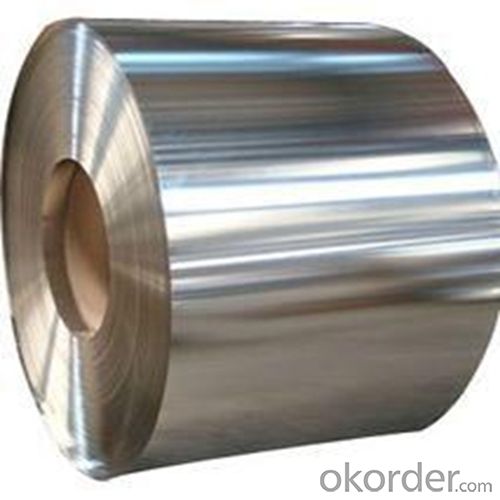
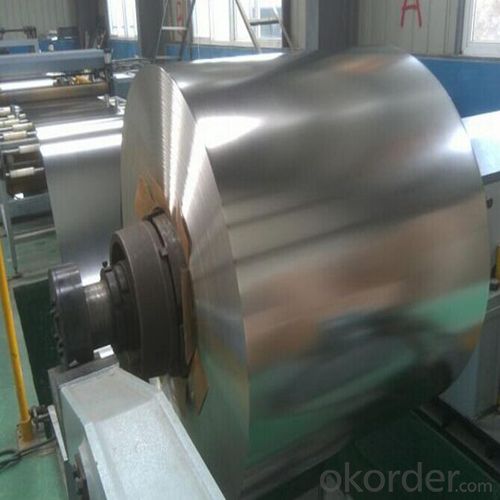
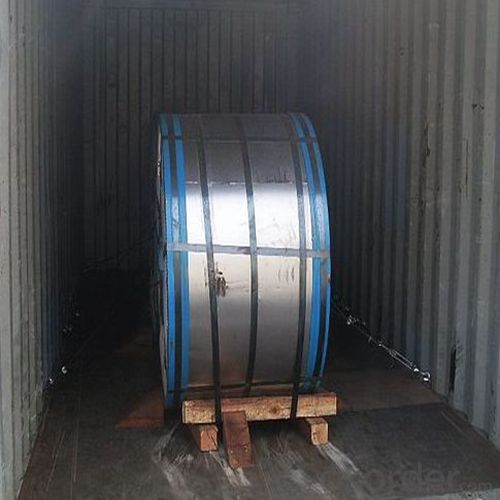
4.Electrolytic tinplate (ETP) coils and sheets for Metal Packaging Specification
Standard | ISO 11949 -1995, GB/T2520-2000,JIS G3303,ASTM A623, BS EN 10202
|
Material | MR,SPCC |
Thickness | 0.15mm - 0.50mm |
Width | 600mm -1150mm |
Temper | T1-T5 |
Annealing | BA & CA |
Coil Inner Diameter | 508mm |
Weight | 6-10 tons/coil 1~1.7 tons/sheets bundle |
Passivation | 311 |
Oil | DOS |
Surface | Finish,bright,stone,matte,silver |
5.FAQ of Electrolytic tinplate (ETP) coils and sheets for Metal Packaging
-How to place .an order or contact you ?
Please send us Email. we will give you a quick response in seconds .
- How is your quality ?
All our quality is prime even the secondary quality . We have many years experience
In this field with serious quality control standard . Advanced equipment, We welcome your visit to our factory .
- Q: What are the common defects in tinplate?
- Some common defects in tinplate include rust spots, black specks, pinholes, and uneven coating.
- Q: Can tinplate be shielded?
- For tinplate shielding, it is a kind of shielding material, at present 3 applications more cheap, processing is good, but the finished long-term placement of rust on the fracture surface, thus affecting the weldability, which is its only drawback. If it is placed in a short time, it will not affect weldability. Electroplating is not the best way to solve the problem. My supplier is coated with an anti rust paint on the fracture surface, and then ultrasonic cleaning is done before going on line. But I mostly use "ocean shield frame copper to make," a little expensive, but the performance is very good ^_^
- Q: Can tinplate be used for packaging beverages?
- Yes, tinplate can be used for packaging beverages. Tinplate is a type of steel coated with tin, which provides excellent corrosion resistance and ensures the contents of the packaging remain safe and unaffected. It is commonly used for packaging beverages such as canned drinks, juices, and other liquid products as it prevents contamination, preserves freshness, and extends the shelf life of the product.
- Q: Can tinplate be used for packaging pharmaceutical products?
- Yes, tinplate can be used for packaging pharmaceutical products. Tinplate is a type of steel coated with a thin layer of tin, making it resistant to corrosion and providing a protective barrier for the contents. It is commonly used for packaging various products, including pharmaceuticals, due to its durability, tamper-proof characteristics, and ability to maintain the quality and integrity of the packaged items.
- Q: What are the main uses of tinplate?
- Tinplate is primarily used for packaging and canning purposes due to its excellent corrosion resistance and ability to maintain the quality and freshness of food products. It is also utilized in the production of metal containers, aerosol cans, bottle caps, and various household items. Additionally, tinplate finds applications in the manufacturing of electrical components, such as transformers and capacitors, as well as in the construction industry for roofing and cladding purposes.
- Q: Can tinplate be embossed?
- Yes, tinplate can be embossed.
- Q: What are the regulations and standards related to tinplate packaging?
- The regulations and standards related to tinplate packaging vary depending on the country and industry. However, some common regulations and standards include ensuring the tinplate packaging materials are food-grade and safe for consumers, complying with labeling requirements such as product information and warnings, and meeting environmental regulations for packaging waste management. Additionally, tinplate packaging may need to adhere to specific industry standards like those set by the International Organization for Standardization (ISO) or specific regulatory bodies such as the United States Food and Drug Administration (FDA).
- Q: Can tinplate be used for non-packaging applications?
- Yes, tinplate can be used for non-packaging applications. Tinplate's excellent corrosion resistance, ductility, and formability make it suitable for various non-packaging uses such as automotive parts, construction materials, electrical components, and decorative purposes.
- Q: What are the different methods of storing tinplate packaging?
- There are several different methods of storing tinplate packaging, including stacking, shelving, hanging, palletizing, or using storage racks. The choice of method depends on factors such as the quantity of packaging, available space, ease of access, and the specific requirements of the products being stored.
- Q: Can tinplate be embossed or engraved?
- Yes, tinplate can be embossed or engraved.
Send your message to us
Electrolytic tinplate (ETP) coils and sheets for Metal Packaging
- Loading Port:
- Tianjin
- Payment Terms:
- TT OR LC
- Min Order Qty:
- 25 m.t.
- Supply Capability:
- 20000 m.t./month
OKorder Service Pledge
OKorder Financial Service
Similar products
Hot products
Hot Searches
Related keywords


